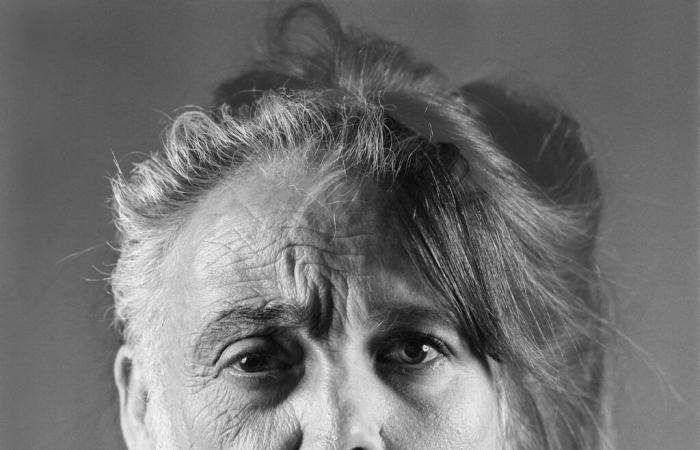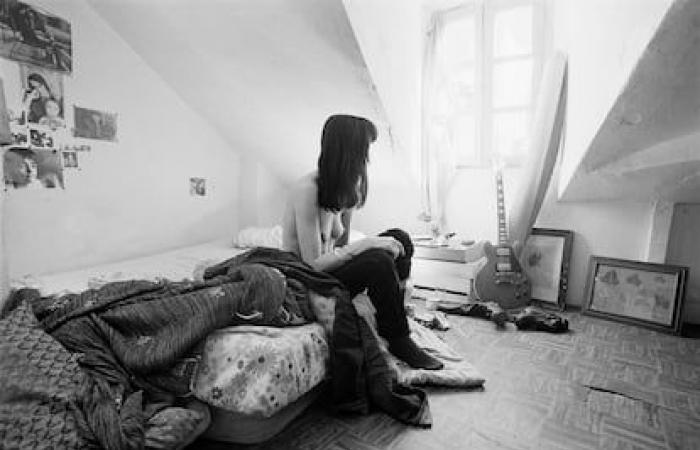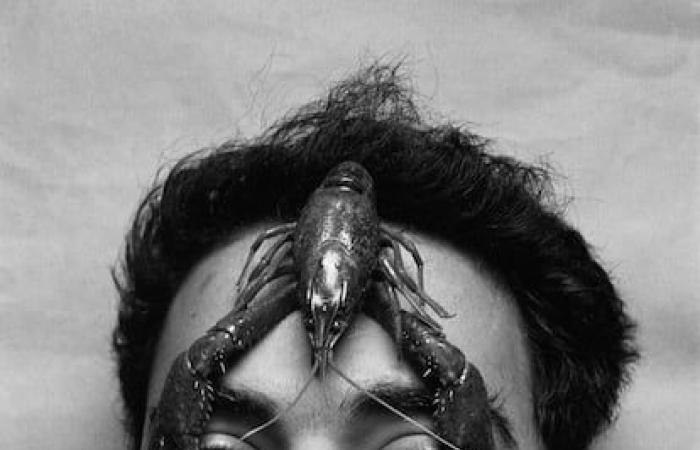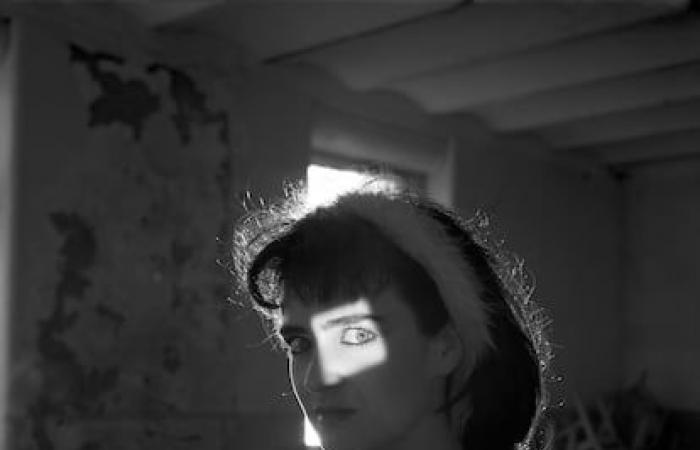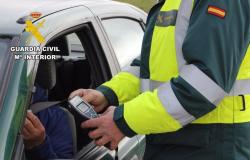At this point, the work of Alberto García-Alix (León, 1956) is unquestionable. He is the portrait of his most famous and valued generation inside and outside Spain. You just have to remember any of your awards: National Photography Award in 1999; Knight of the Order of the Arts and Letters of France since 2012, or the Gold Medal of Merit in the Fine Arts, awarded by the Ministry of Culture of Spain in 2019. There are his works in Reina Sofía, at the Botín Foundation and even in the Prado. With 69 years it maintains an enviable activity. The appearance at the end of 2024 of the second volume of its Nomad file (Chorlito head) continues the work of organizing its thousands of photographs, in this case in the period between 1982 and 1986, with the move in its zenith and subsequent decline. In turn, The absence as a stimulus (Chorlito-Estampa/ Ifema Madrid head), is reissue and rewriting of the conference that García-Alix gave in 2023 within the cycle Contemporary ghosts, Commissioner by Pilar Soler Montes.
Does the decision to look back and count? It was not my idea, but of Frédérique Bangerter, the chorlito head editor. when he came with the proposal, I refused, because publishing everything, even the bad photos, was something I did not understand. That is very of the authors. We want what we believe best are seen, but Frédérique said no, that everything had to do. And so he began to prepare. The truth is that when I saw the result I was very happy. It is curious, because for me it has meant revisiting many photos that neither remembered or recognized. Let’s say 88% of what was done, since there may be four or five shots from a photograph. As a file book that it is, it has the virtue that it also allows you to see the streets of Madrid of that time. It is understood, by that burden of information that photography has, everything, life, right?
At the beginning of the text My lighter life, He wonders if he was “a wrong man.” Do you think there are errors that the artistic desire knows how to transmute in successes, or do you just have to live with them? You have to live with it. I have never made anything. He has never given me a repair to tell the truth. Have I been drug addict? Yes, there is no more. I don’t regret it either. Nor do I hate myself. Nor did I feel. I am a privileged … I don’t care if a life or a work is tumultuous. What happens is that if you open my books, already in the first, in one of the photos of the year 1976, there are the syringes, just start. And it is an important part of the photos. In the second volume they disappear, but it is not that there were no, there are only no photos. One learns that the photos are very somsyed. You cannot foresee what will say years later, but registering all that … in the first volume, it is a more intimate, street more intimate. When I started taking photos, logically, I wanted to take pictures on the street, constantly. It was my safari. I still like it a lot. The streets are always renewed, things are always happening. They need patience, a lot of eye, be very fast, kick, know how to place well, as the big reporters do. There is always a kind of dance when you walk with the camera down the street.
Regarding the first volume of Nomad file, What memories have returned from those beginnings? I had no photographic knowledge, I didn’t know photographers, I was not in that world. Even so, from very early I felt powerful, in the sense of being the owner of my gaze. That is what I liked. Look. The independence of the gaze. At first, the camera helped me to enter and discover the world and, in some way, the photographic fact. The first volume ends at the time I leave the army, in 1981, and I will see an exhibition by August Sander, then another American photography. They were two exhibitions that marked my photographic feeling. With that of August Sander, the portrait and independence of the gaze becomes evident, something that one did not know or intuited but that was already revealed. With Sander, with the Americans, with Elliott Erwitt, Danny Lyon, Diane Arbus … later, also Café Lehmitz, from Anders Petersen. We made a book at the head of Chorlito. It is one of the works that I liked the most in the history of photography. Extraordinary. The characters, what happens, the empathy with which the photographer is placed. It is spectacular … but, as I said, in the first volume of the file my knowledge was scarce. I immediately learned to reveal the reels well and that sense of property in the look came. I was self -taught. However, I always think that one has a good teacher, walk faster. And a teacher teaches us to love what he discloses. I didn’t have that luck, but I quickly loved photography.
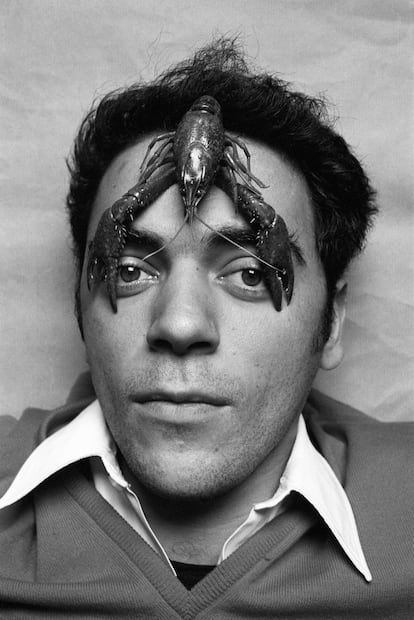
The intimate and the autobiographical place have a place in such a fugitive and fast art? Life … well, it’s rhetoric, isolated lyric … To take photos I have more defenses. To write no longer so much. It costs me that expression of vision, I don’t have the discipline it requires. But it is true that I get a very poetic channel. Regarding the intimate and the autobiographical, I think so. The subjective, of course it has a place. I have always said, and I have repeated this to satiety, that a way of being is a way of seeing, and vice versa. Under that premise I understand artistic authorship. If I had not lived what I lived, if it had not been so, it would not make sense what I have done or have my job. The look is educated. We educate her.
“We are born with absence pain. […] We beat in the lost, forgotten, in the gone and in the beyond we do not have, ”he says about his recent project, The absence as a stimulus. I write forced [risas]. I do not feel here in the afternoon and I get to wait for inspiration … no, it’s always for obligation. For external imperatives. Because they ask me for a text, for the script of an audiovisual work. Motu proprio, To enjoy, no.
His is a custom pen. Yes, because I don’t enjoy. It costs me. You feel here, with the computer, and you think about the absence, see where I put the head … host … Besides, then there is the pressure of delivering the work in a month, and come on … The absence as a stimulus It comes because a curator, Pilar Soler Montes, commissioned me a conference for a conference at the Alcalá 31 Gallery. He gave me two themes, one I do not remember and the other was the chosen one. I immediately had that word on my head with photography. They have to do. In mine, enough. I had to deepen reflection.
Do you still feel passion for motorcycles? I live with them. I have one out, I have this here and two others in the workshop. Yes, I lead all my life with motorcycles … Over the years, sometimes one thinks that many things begin to be left over. That with a voucher.
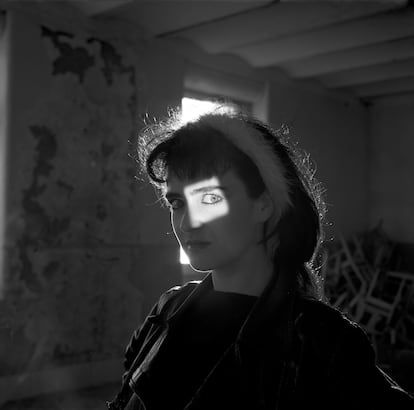
But is it still traveling? Yes, of course. And it’s not just that I go on a trip, I get to the road and keep putting me. When I get the light, the sun, the wind, I even laugh. I don’t shoot so many photos, yes. But I laugh because sometimes the cars look at you and think, “fuck, youth is crazy”, because under the helmet they believe you are 18 years old. It has happened to me to take off my helmet, to look at me and surprise me. But the motorcycle public has become greater. There has been no relief. You no longer attract young people. When I was, we just dreamed of mounting them, with their speed … motorcycles, as such, and this is known by the industry, its audience, has aged. Not as much as I, let’s say, but yes. The one there [señala una Derbi Antorcha que el fotógrafo tuvo en su adolescencia] They gave it to me for a birthday. We improved the cushions, but it is identical to the one that was riding my 15 years. This other is a jewel [una Harley-Davidson XLCR 1000 Cafe Racer]there are very few in the world. I was lucky to buy one in February 1984. Only 1200 were made, thinking of Europe, the public rocker, In the English public, above all, and when they tested it, “what a break …”. They had better. They stopped more, they ran more … It was a failed, but mythical motorcycle. For years I toured Spain with her. Now I see her and think, “but how crazy he was, how he was going on that bug” [risas]. I was happy. I worked to ride a motorcycle. He took photos to be able to be around two months.
In recent years, his preference for portraits has been opting for attention on stage, the details often just as raw as his photographed characters. Is it due to a greater will for nudity? Also. At first no, because then my gaze was from here [señala su rostro] out. That changes. Thinking about the present, for me photography is a space to invent. Regardless of whatever I look at, whatever.
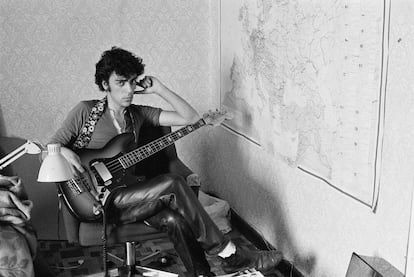
Invent but without touching fiction, right? No, fiction is not good for me. Photography requires me a dialogue with what was seen. Before taking the camera, I don’t see. Only when I am behind her I am forced to that dialogue. That is the one who has taken more body in me when seeing photography.
The writing, the publication of its texts in magazines, in catalogs, in books, to what extent has it complemented with your photographic gaze? To a bit extent, especially when I have made the scripts of my audiovisual works. It is another creative drive. I love the combination of the image and the word. The absence as a stimulus It is the third or fourth conference I make about it. The previous one, The paradise of believers (2015), I was about what is a word and what is image and marched so well that it was recorded and edited. I liked the experience. The same always happens with my audiovisual work. The great effort is not the photo or the image, but the act of writing. Get the script to have life. I also consider that my rhythm is good. Let it be circular, hypnotic. The script is the one that guides and gives everything. I start the same, with panic attacks. To do the creation work Where does it not come from (2008), for the great exhibition they made in Queen Sofia, I had to go outside and isolate myself to write, because in Madrid it costs me, everything distracts me. Once I start, it is always with panic attacks, thinking that there are times that I would pay for not doing so, with all the blows, forced to write at night, and so on. But in all writing work, there is an instant that they begin to take body, their breathing is noticed, and it is wonderful to put the end because you have to present it and no longer give time to suffer more.
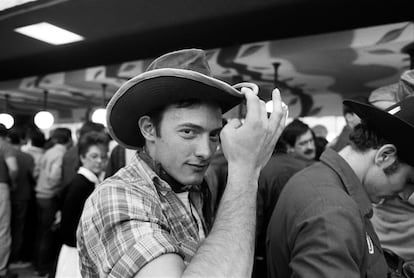
That appreciation, taking up your Nomadic filesDoes it make one more sentimental, more melancholic? When I see those photos I think, fuck, how young we were! I see the friends of that time, frozen in their time, but they don’t believe me too much melancholy. They make me more understanding. There are many feelings with the portraits. I repeat it, I am a privileged. I am here, I have done a work. I see people, colleagues and I know the outcomes, I know the stories … I feel a varied mixture of compassion, love, affection, understanding. “The greatest glory of God.”

